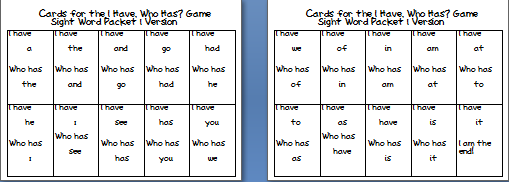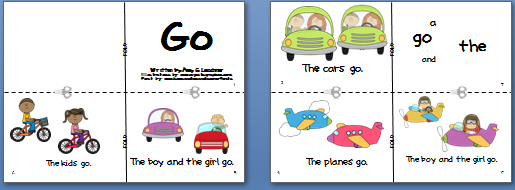Hello friends!
Raise your hand if you like teaching and working on sight words? In my classroom, I use HeidiSongs to teach the words using music. What is also great about the resources on her sight, is that she has quite a few things to make games and centers for classroom use. However, for me, since I use the Daily 5 method for my literacy centers, I can go through her resources pretty quickly. One of the literacy stations is called "Word Work." For my classroom, I do a mixture of ABC letter work (games for identification, letter order, letter sounds) and sight word practice. I created a new packet for my team and I to use as it follows the words outlined in our reading basal (SRA). The activities are actually all ideas that came from my class last year, so I have to give them credit on helping this adult come up with some things a kindergartner and first grader would enjoy!
The words in the packet are: a, the, and, go, had, he, I, see, has, you, we, of, in, am, at, to, as, have, is, it.
The first set of activities comes from a group of boys in my class that loved to use color codes and find a mystery picture, whether it was symbols, numbers, or words. Here is a picture:
 The next activities are perfect for a "Word Work" type of center, handwriting practice, or even spelling practice. (Yes, I said spelling in regards to a kindergarten class. I have heard of school districts assigning spelling lists for as young as kindergarten.) The first set is designed to work with a set of stamps and two ink pads in red and blue. You have the child read the sight word aloud and then stamp it out, using red for the vowels and blue for the consonants. Then they can use math skills (Look! integrating sorting and counting) and figure out how many vowels and consonants are in each word. I had a few kiddos last year that loved to do this all the time. The second set of activities is a nod to my girls who would rainbow write EVERYTHING last year! You can use any type of crayon or marker and let them write the sight words in a pretty fashion! :-)
The next activities are perfect for a "Word Work" type of center, handwriting practice, or even spelling practice. (Yes, I said spelling in regards to a kindergarten class. I have heard of school districts assigning spelling lists for as young as kindergarten.) The first set is designed to work with a set of stamps and two ink pads in red and blue. You have the child read the sight word aloud and then stamp it out, using red for the vowels and blue for the consonants. Then they can use math skills (Look! integrating sorting and counting) and figure out how many vowels and consonants are in each word. I had a few kiddos last year that loved to do this all the time. The second set of activities is a nod to my girls who would rainbow write EVERYTHING last year! You can use any type of crayon or marker and let them write the sight words in a pretty fashion! :-) 





























